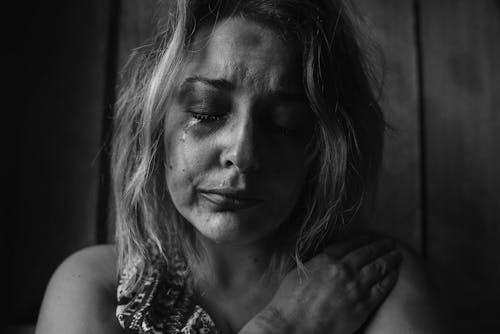- Right to know
- Right to produce before magistrate concerned without any delay.
- Right to free legal aid
- Right to silence
- Right to know the substances of warrant.
- right to consult a legal practitioner
- Medical examination.
- Right to inform the family and friends.
Law Blogs, study material for law students, Daily News, different Topics of law, IPC (Indian Penal Code), Code of criminal procedure, News regarding laws, labour law, constitution of India, Rights and duties of country citizens, family law, Hindu Law, Muslim Law.
Tuesday, June 30, 2020
Is arrested person has some rights under Crpc?
Friday, June 26, 2020
Is Domestic violence is second bigger problem in India after covid-19? How a woman can get out of this?

Domestic Violence in India "A curse". How a women can get out of it ?
- Meaning of Domestic Violence under this act.
- Types of abuses in this act.
- Who is aggrieved person.
- Which place you can call a share household.
- Who can give the information.
- Duties of service provider, Police officer, Protection officer when the report is file.

- Physical abuse:- Any act which cause physical pain, endanger life, impact on physical health of aggrieved. For eg hitting punches, pull the hairs, slapping.
- Sexual abuse:- Any sexual nature act which degrade the dignity of a women. for eg grabbing clothes of a women.
- Verbal or emotional abuse:- It means insult verbally by calling her name and abusing her continually. Emotional abuse is continually threat a woman which give a bad impact on her health.
- Economic abuse:- It means to stop all the financial resources to aggrieved person which is necessary for the aggrieved person and her children for their daily necessities.
Monday, June 22, 2020
What our Indian Penal Code (IPC) said on suicide case, Burning case of Sushant Singh Rajput
Sushant Singh Rajput suicide case:-
Meaning of suicide:-
IPC(Indian Penal Code) section 306 :-
Abetment of suicide:- This section is applied when there is a person abets other persom for do suicide and he will also go in prison extends for 10 years.
IPC (Indian Penal Code) section 109:-
Punishment of abetment:- In simple language this section is applied when the act of abetment (instigation to do a crime) by a person is committed with consequences of abetment but there is no provision for the punishment of such abetment then the person should be punished with the punishment provided for the offence.
Abetting of suicide is a non bailable offence.
IPC(Indian Penal Code) section 504:-
Intentional insult with intent to provoke breach of the peace:- Its meaning in simple word is if a person intentionally insult someone which could be reason to break the public peace, or because of this insult other person commit any offence, could be charged under this section. He shall be punished of imprisonment which may extend to two years or fine or both. This is a bailabe offence.
IPC(Indian Penal Code) section 506:-
Punishment of criminal intimidation :- In simple language if someone intimidate other he shall be punished for imprisonment for 2 years or fine or both. But if the threat is cause to death or grievous hurt he could be imprisonment for life and if he impute on chasity of a woman he shall be punished which extend to 7 years or fine or both. This is a bailable offence but there is an exception of this it can be non bailable in some cases because in this section offence is divided into two parts.
Friday, June 19, 2020
News on India China Border : Deadly clash on India China Border.India China treaty (1993, 1996, 2013)
Clashes on China India border:-
Treaties of india china border:-
India China Treaty 1993 :-
- The two sides shall respect the LAC(Line of Actual Control). Any personnel will not cross the LAC. In case of cross of LAC by a personnel they shall immediately pull back to the own side.
- The two sides agree to reduce their military force along the LAC.
- Neither side shall do the military exercise. each side shall give the prior notice of military exercise of specified level near the LAC.
- In case of any problem both sides shall deal with mutually and friendly consultation.
- Both sides shall also consult on possible restrictions on air exercise in area to be mutually agreed near the LAC.
- Two sides reduce the military force to maintain the peace and tranquility.
- Both sides shall appoint diplomatic and military experts to formulate implementation measure for the presents agreement.
India China Treaty 1996 :-
- Neither side use its military capabilities against the other side. No army forces threaten the other side force by attacking.
- Both sides strictly respect the LAC. No activites of either side shall overstep the LAC.
- Both side reduces the no of field army, Border Defence Force, Paramilitary Force and others.Both side decide the limit of forces armaments to be kept by each.
- Both side avoid holding large scale military exercise involving more than one brigade (app 1500 troops).
- Combat aircraft (include figther, bombery, military trainer)can not fly under the 10 km area of LAC. If it does so it shall give the information about combat like type, number,height, proposed duration,timing etc to other side. But unarmed can be fly.
- Neither side shall open fire, blast operation, hunt operation within 2km area. If there is a need to do they have to inform the other side. But always precaution shall be taken that no bullets or missile can accidently fall on the other side.
- To strengthen exchange and co-operation between the military force both sides agree to maintain and expand the regime of scheduled and flag meetings between the borders.
- In unavoidable circumstances like natural disaster, personnel should cross the LAC and inform their side as soon as possible of crossing.
- In any doubt regarding LAC either sides has right to seek a clarification from other side.
India China Treaty 2013 :-
- Two sides shall carry out border defence communication on the basis of their respective laws and relevant bilateral agreement.
- Both sides shall implement border defence co-operation in the ways like exchange information about military exercise ,aircrafts, demolition operation,and unmarked mine. Jointly combat smuggling of arms, wildlife, work with other side in natural disaster or pandemic etc.
- Border defence co-operation visualised in this agreement shall be implemented through flag meetings,Periodic meeting etc.
- Both sides may establish border personnel meeting in all sectors for implementing border defence co-operation.
- To enhance co-operation between border defence force of two side each may invites other side on festival major national or military days.
- The two side agree that they shall not follow or trail patrols of other sides in area where there is no common understanding of LAC in India China border.
- The two sides agree that if the border defence force of two sides comes to face to face situation in area where there is no common understanding about LAC, Both sides shall exercise maximum self restrain, refrain from any provocation action, not use of force or threat to use of force.
Wednesday, June 17, 2020
Supreme Court issues notice to centre government on plea to transfer the PM care fund to NDRF
Tuesday, June 16, 2020
PIL(Public Interest Litigation) meaning, Origin of PIL and Who and How to file a PIL

Once the PIL copy is ready to e filed in the High Court, then submit 2 copies of the petition to the court.
# Along with this, one copy of the petition needs to be served to the respondent in advance. This proof of the serving the petition copy to the respondenthas to be affixed in the petition.
#If the PIL is filed in the Supreme Court, Then Five copies of petition need to be submitted to the court. Respondent is served with the petition copy when the court isuues the notice regarding the same. The fee of file a PIL is just rs. 50. However the total cost can be vary from place to place and cost is also depend on advocate fee.
---------------------------------------------------------------------------------------------------------------
MUMBAI KAAMGAR SABHA VS ABDULBHAI FAIZULLABHAI
In this case petition was filed by Kapila Hingorani. This petition was filed for the condition of prisoners in Bihar jail. Many undertrial prisoner are in the patna jail, ranchi cental jail, muzaffarpur cental jail. This petition was filed with the name of Hussainara Khatoon thats why this case was called Hussainara Khatoon vs state of bihar case. In this case supreme court take considered the article 12 and article 39A of indian constitution and passed order to release prisoners because their detainment is illegal it is the voilation of fundamental rights of a citizen which are provided in article 12 of indian constitution. Result of this 40000 prisoner were released and for the remaining prisoners court give the orders to authorities to provide them free lawyers. Because it the right of a citizen and it is also given in article 39A of Indian constitution.
Sunday, June 14, 2020
Migrant labourer and their fundamental rights during covid- 19 panademic


Can Police arrest a person without warrant ?
O ur Indian constitution provide some fundamental rights to every citizen of India. Which are like right to freedom, right to speech, right ...

-
Child Testimony in Indian evidence act, 1872 C an a child be a witness in court? Its a big question. I...
-
How many types of bail are there in india. What are the conditions to get a bail in non bailable offence. Meaning of Bail:- In simple lan...
-
News on India China Border:- Deadly clash 20 Indian soldiers martyr , Terms and condition of treaties (1993,1996,2013) between India Ch...








